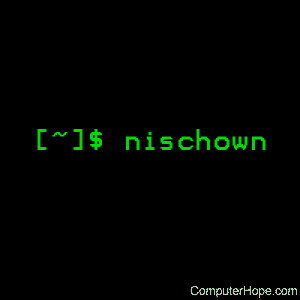Linux nischown command

On the Solaris operating system, the nischown command changes the owner of an NIS+ object.
Description
nischown changes the owner of the NIS+ objects or entries specified by name to owner. Entries are specified using indexed names (see nismatch). If owner is not a fully qualified NIS+ principal name, the default domain (see nisdefaults) is appended to it.
The only restriction on changing an object's owner is you must have modify permissions for the object.
If you are the current owner of an object and you change ownership, you may not be able to regain ownership unless you have modify access to the new object.
The command fails if the master NIS+ server is not running.
The NIS+ server checks the validity of the name before making the modification.
Syntax
nischown [-AfLP] owner name...
Options
| -A | Modify all entries in all tables in the concatenation path that match the search criteria specified in name. It implies the -P option. |
| -f | Force the operation and fail silently if it does not succeed. |
| -L | Follow links and change the owner of the linked object or entries rather than the owner of the link itself. |
| -P | Follow the concatenation path within a named table. This option is only meaningful when either name is an indexed name, or the -L option is also specified and the named object is a link pointing to entries. |
Environment
If the NIS_PATH environment variable is set, and the NIS+ name is not fully qualified, each directory specified is searched until the object is found (see nisdefaults).
Examples
nischown skippy object
Changes the owner of the NIS+ object object to the local domain principal skippy.
nischown bob.remote.domain object
Changes the owner of the NIS+ object object to the remote domain remote.domain principal bob.
Related commands
nischmod — Change access rights on an NIS+ object.
nischttl — Change the time to live value of an NIS+ object.
nisdefaults — Display NIS+ default values.
nismatch — Utilities for searching NIS+ tables.
